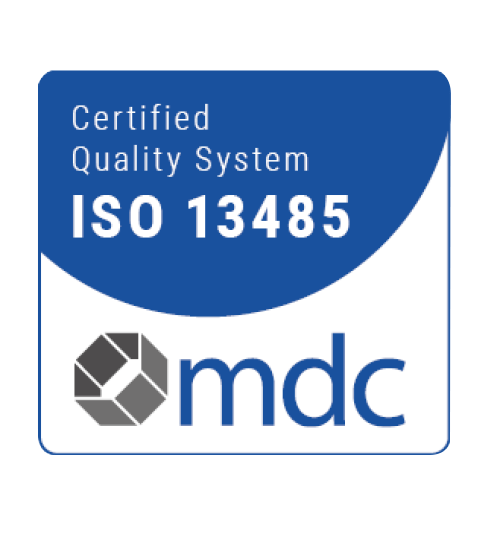
Retainers are essential for preserving the results of orthodontic treatment, ensuring your teeth stay perfectly aligned long after braces are removed. Given the variety of options available, many people find themselves overwhelmed when choosing a suitable retainer. Each type of retainer has benefits and considerations, making it crucial to understand what best suits your needs. By exploring the different kinds of retainers, you can make an informed decision that keeps your smile straight and healthy for years.
Types of Retainers
Fixed Retainers
Fixed retainers consist of a thin wire bonded to the back of the front teeth, offering continuous and long-term stabilization. This type of retainer is not removable by the patient and is particularly effective for preventing movement in the lower front teeth. Fixed retainers are beneficial because they constantly hold the teeth in place without requiring daily attention or removal, making them a reliable option for maintaining orthodontic results.
Removable Retainers
Removable retainers are typically made of acrylic and wire and can be taken out for eating and cleaning. These retainers provide flexibility and ease of use while effectively maintaining teeth alignment. Patients can remove them as needed, which makes maintaining oral hygiene simpler. However, their effectiveness depends on consistent wear as prescribed by the orthodontist, which usually means wearing them every night.
Clear Aligners
Clear aligners are made from clear plastic and are custom-fitted to the patient’s teeth, offering a nearly invisible option for maintaining teeth positioning after orthodontic treatment. These retainers are comfortable and discreet, making them an attractive choice for many patients. Clear aligners need to be worn consistently, typically at night, to be effective, and they offer the added benefit of being removable for eating and cleaning, similar to traditional removable retainers.
Choosing the Right Retainer for You
Selecting a suitable retainer involves carefully considering various factors to ensure it fits your needs and lifestyle. Consulting with an orthodontist is crucial for personalized recommendations based on your dental history and specific requirements. Making an informed decision helps maintain the alignment of your teeth and the overall health of your smile.
Evaluate Your Dental Needs
Consider the extent of your orthodontic treatment and any specific dental issues you might have. Different retailers offer varying levels of support and adjustment capabilities. Assess whether you need a retainer that allows for minor adjustments over time or provides robust support. Understanding your dental needs helps narrow down the options.
Consider Your Lifestyle
Think about your daily routine and how a retainer will fit into it. Some retainers require more maintenance and cleaning, while others require less maintenance. Evaluate how comfortable you are with a visible retainer versus an invisible one. Your lifestyle can significantly impact the type of retainer that will work best for you.
Factor in Aesthetic Preferences
Clear retainers like Essix or Vivera might be more appealing if appearance is a significant concern. These retainers are less noticeable, making them ideal for individuals who prefer a discreet option. Consider how comfortable you feel wearing a retainer that might be more visible, such as a Hawley retainer with a metal wire. Balancing aesthetics with functionality is critical.
Assess Long-Term Maintenance
Retainers require regular care and maintenance to function effectively. Consider the cleaning and upkeep involved with each type of retainer. Permanent retainers need diligent cleaning around the fixed wire, while removable retainers like Essix need regular soaking and brushing. Understanding the maintenance requirements can help you choose a retainer that fits your routine.
Review Cost Considerations
The cost of retainers can vary significantly, with some types being more expensive than others—factor in the initial cost and the potential need for replacements or repairs. Insurance coverage and orthodontic plans may also influence your decision. Weighing the cost against the benefits can help you make a financially sound choice.

Common Issues With Retainers and How to Fix Them
Retainers are essential for maintaining orthodontic results but can come with some common issues. Understanding how to address these challenges can help make the experience more manageable. Here are some typical problems and practical solutions to smooth your retainer journey.
Discomfort and Soreness
It’s normal to experience discomfort or soreness when you first start wearing a retainer. It usually subsides as you adjust to it. Use over-the-counter pain relievers to alleviate discomfort, and stick to soft foods for the first few days. Wearing the retainer consistently helps your mouth adapt more quickly.
Speech Difficulties
Retainers can initially affect your speech, causing a slight lisp or difficulty pronouncing certain words. This issue typically improves with practice and time. Reading aloud or speaking more frequently can help your tongue adjust to the retainer. Practicing speaking with your retainer will accelerate this adjustment period.
Breakage or Damage
Retainers, especially the plastic types, can crack or break if not handled properly. Avoid bending or playing with your retainer to prevent damage. Always store it in its case when not in use to protect it from accidental damage. If your retainer does break, contact your orthodontist for a replacement or repair.
Loss or Misplacement
Losing a retainer is a common issue, especially for children and teenagers. Always keep your retainer in its case when not wearing it. Avoid placing it on napkins or loose in bags where it can be easily lost. If you lose your retainer, notify your orthodontist immediately to get a replacement and avoid any dental setbacks.
The Buildup of Plaque and Odor
If not cleaned regularly, retainers can accumulate plaque and develop an unpleasant odor. Establish a daily cleaning routine using a soft toothbrush and mild soap. Avoid using hot water, which can warp plastic retainers. Proper hygiene practices will keep your retainer fresh and compelling.
Addressing common retainer issues effectively ensures that your orthodontic treatment results are maintained. You can keep your retainer by managing discomfort, speech difficulties, breakage, loss, and plaque buildup. These solutions help make wearing a retainer a smoother experience. Proper care and quick action can prevent minor issues from becoming major problems.
Tips for Adjusting to Life with a Retainer
Adjusting to life with a retainer can take some time, but with the right strategies, it becomes easier. These tips will help you smoothly integrate your retainer into your daily routine and maintain your dental health. Adopting these practices can lead to a more comfortable and practical retainer experience.
Start With Short Periods
If you’re initially struggling to wear your retainer full-time, start with shorter periods and gradually increase the duration. This step-by-step approach allows your mouth to adjust without feeling overwhelmed. Gradual adaptation helps build comfort and habit over time. Soon, you’ll find it easier to wear your retainer as required.
Set Reminders
Use reminders to establish the habit of wearing your retainer. Set alarms on your phone or leave notes in visible places as prompts. Consistency is vital to retaining your orthodontic results, so reminders can be beneficial in the initial stages. They help make wearing your retainer a regular part of your routine.
Stay Hydrated
Drinking plenty of water can help alleviate dry mouth and discomfort associated with wearing a retainer. It also helps keep your mouth clean and reduces the risk of plaque buildup. Staying hydrated is beneficial for your overall oral health. Hydration supports both comfort and hygiene while wearing your retainer.
Maintain Oral Hygiene
Brush and floss regularly to keep your teeth and retainer clean. Good oral hygiene prevents plaque buildup and reduces the risk of gum disease. Clean your retainer daily with a soft toothbrush and mild soap to keep it fresh and functional. Proper hygiene ensures the effectiveness of your retainer.
Be Patient and Persistent
Adjusting to a retainer takes time, and patience is crucial. Remember the benefits of wearing the retainer and stay committed to the routine. Over time, wearing your retainer will become second nature, and you’ll appreciate the lasting results. Persistence pays off in maintaining your perfect smile.
Life with a retainer can be challenging, but these tips can make the transition smoother. Starting with short periods and being patient will help you adapt effectively. Embrace these strategies to ensure your retainer keeps your smile perfect and your teeth healthy. Consistent effort and care lead to the best outcomes in retainer use.
Check out the FirstClass Aligners blog for more insights on retainers and maintaining your perfect smile. Visit now for expert tips and advice!






